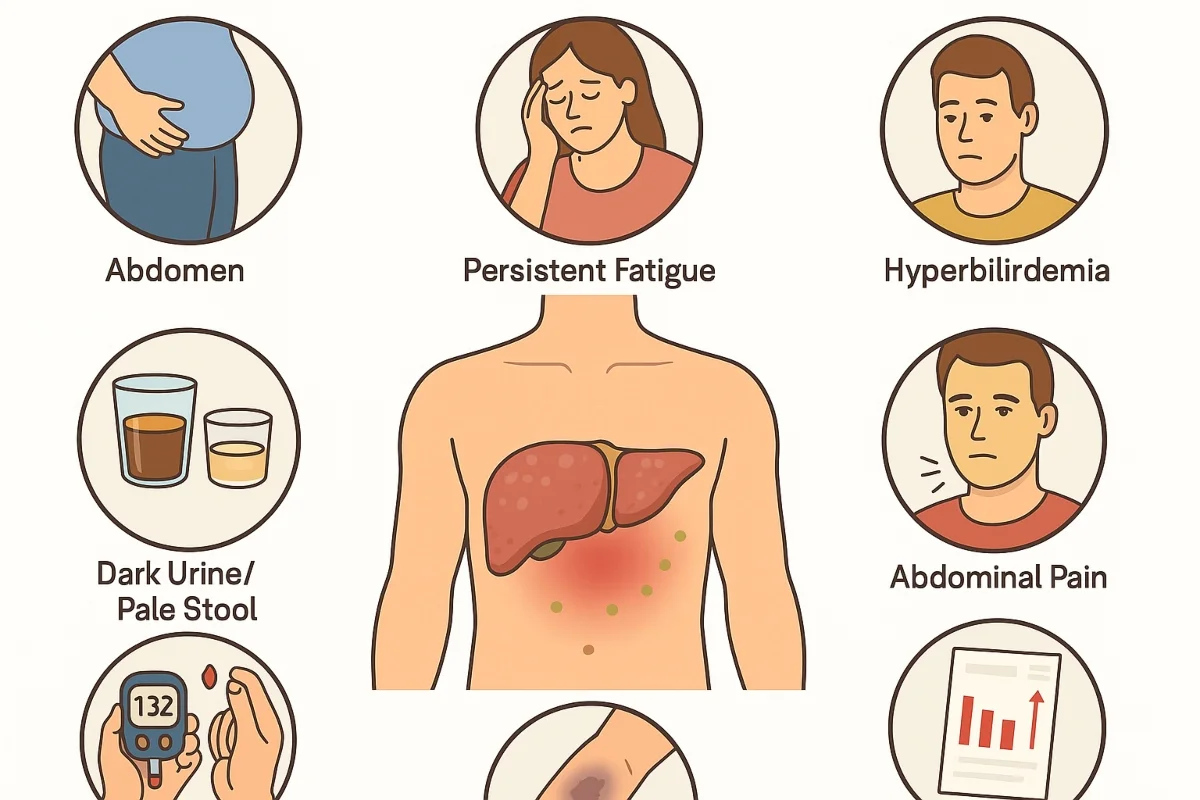It often begins quietly — no pain, no obvious symptoms — until one day your liver stops coping. This silent killer grows unnoticed inside you, turning healthy cells into fat-laden scars that can lead to irreversible liver failure. The most frightening part? You might already have it and not even know.
In today’s world of stress, processed food, and long sitting hours, non-alcoholic fatty liver disease (NAFLD) has become alarmingly common. But early detection can stop the damage in its tracks. Here are eight warning signs that could save your liver — and your life.
8 Warning Signs of Fatty Liver That You Must Not Miss
Harvard gastroenterologist Dr. Saurabh Sethi highlights these key symptoms that can signal fatty liver disease — a condition that quietly harms your liver until it’s too late.
1. Sudden Weight Gain (Especially Around the Belly)
Extra fat around your abdomen may indicate your liver is storing excess fat, slowing down metabolism.
2. Constant Fatigue and Weakness
When the liver can’t detoxify properly, energy levels drop, leaving you tired even after rest.
3. Pain or Fullness in the Upper Right Abdomen
An inflamed or enlarged liver causes discomfort under the right rib cage — a common early warning.
4. High Blood Sugar or Insulin Resistance
Fat buildup affects how your body processes sugar, often leading to prediabetes or diabetes.
5. Dark Urine and Pale Stools
These color changes suggest liver stress or poor bile flow, both of which are linked to fatty liver.
6. Yellow Skin or Eyes (Jaundice)
A sign of rising bilirubin levels — indicating the liver is struggling to filter toxins.
7. High Cholesterol Levels
A damaged liver can’t regulate cholesterol properly, causing spikes in LDL and triglycerides.
8. Easy Bruising or Bleeding
Reduced clotting proteins due to liver damage make bruises appear more easily.
Tip: Fatty liver often shows no early symptoms — regular checkups, a balanced diet, and exercise can help reverse it before it turns serious.
Why Fatty Liver Often Goes Undiagnosed Early?
While diagnosing the later signs is relatively easy for anyone, the earlier signs are common to many diseases. This makes the early detection, cure, and even reversal of your fatty liver quite difficult. For a better diagnosis, you can take a routine health checkup followed by a USG to confirm your case. The good news is that fatty liver in its early stages (stages 1 and 2) is entirely reversible.
To prevent liver damage, experts advise focusing on fibre, lean protein, a balanced diet, and exercise. Avoiding sugary desserts, processed food, alcohol, and staying hydrated will reverse the effects in earlier cases. Whereas, if you reach stage 3 or stage 4, then a partial or complete liver transplant will become mandatory.
Disclaimer: This content, including advice, provides general information only. It is not a substitute for a qualified medical opinion in any way. The methods and claims mentioned in this article should be considered as suggestions only; DNP India neither confirms nor denies them. Always consult a doctor before following any such suggestions/treatments/medications/diets.
